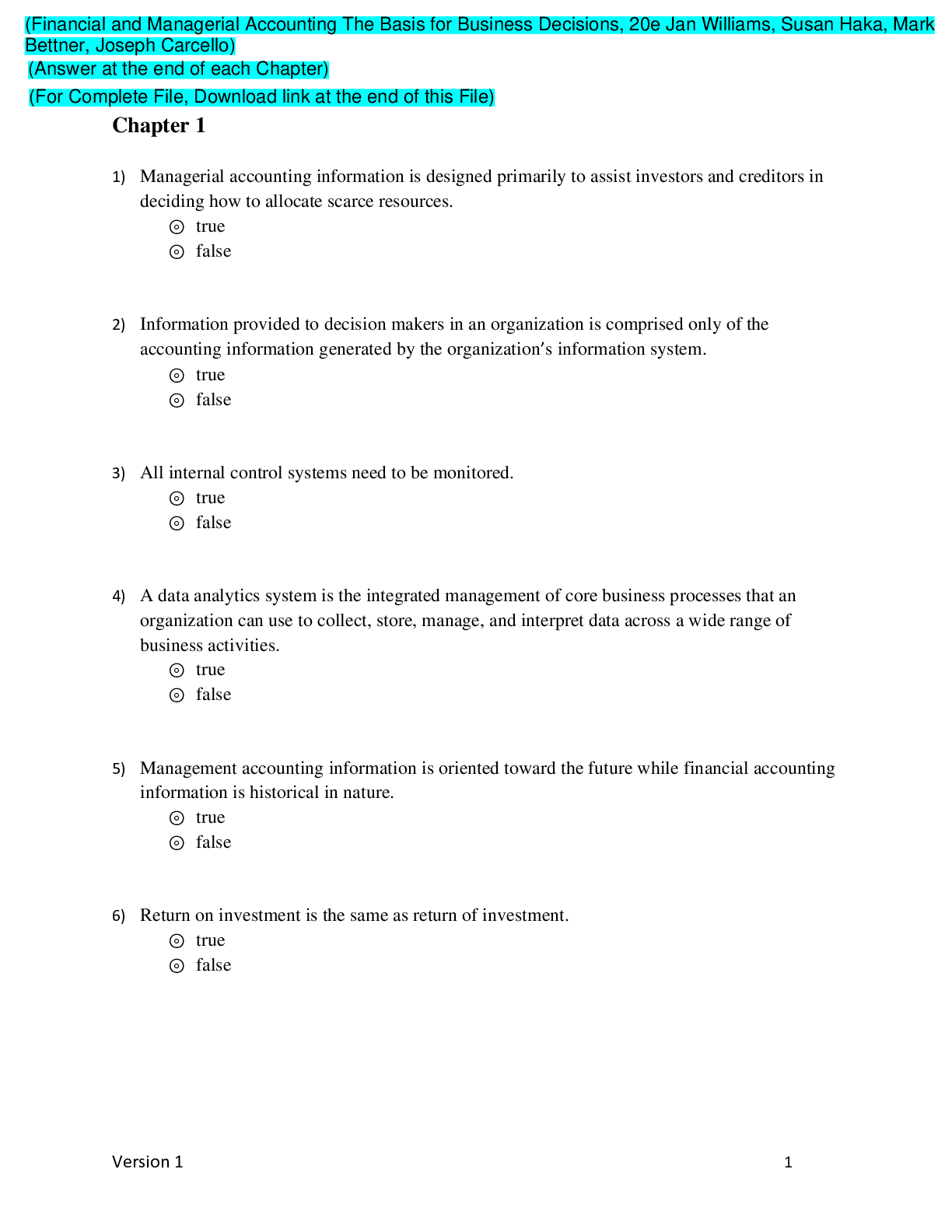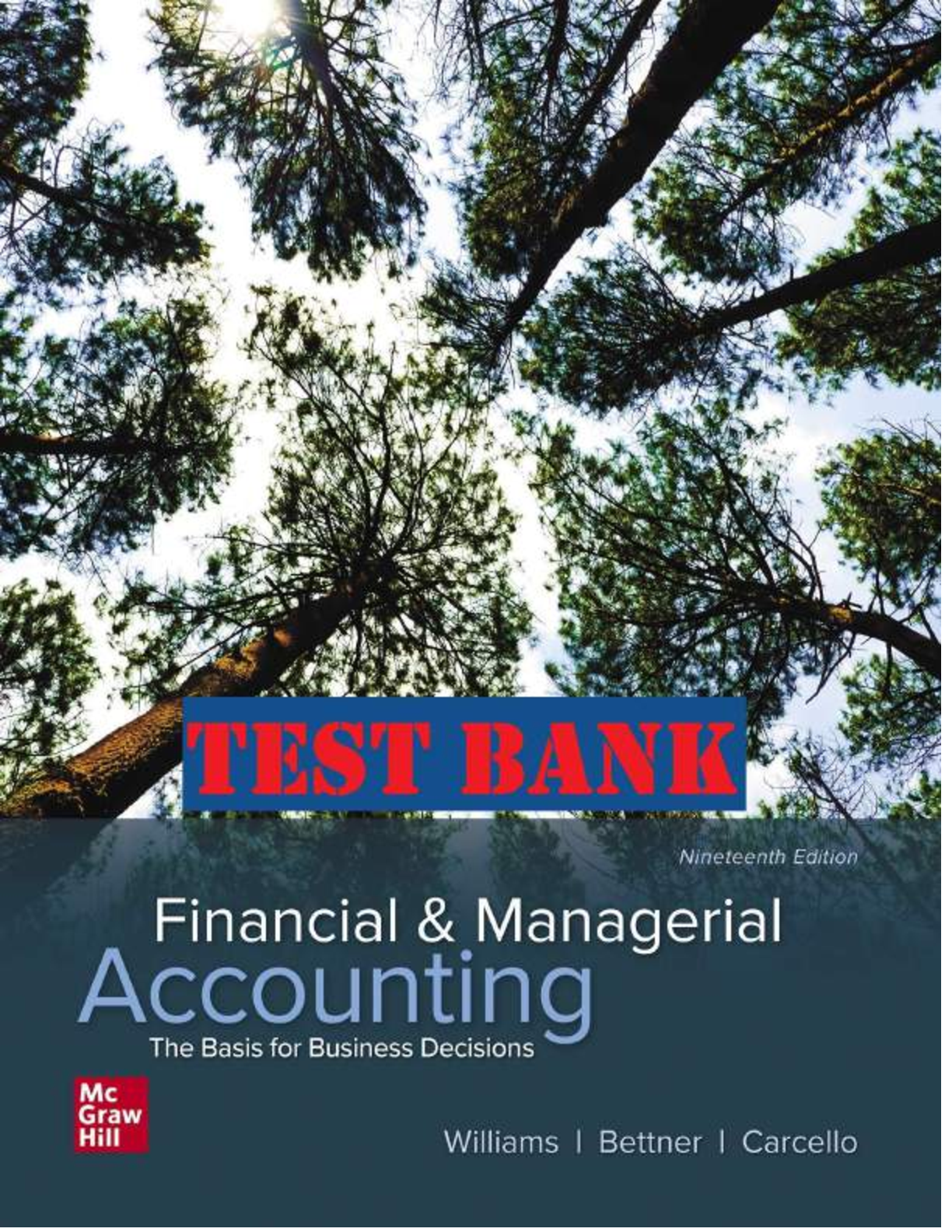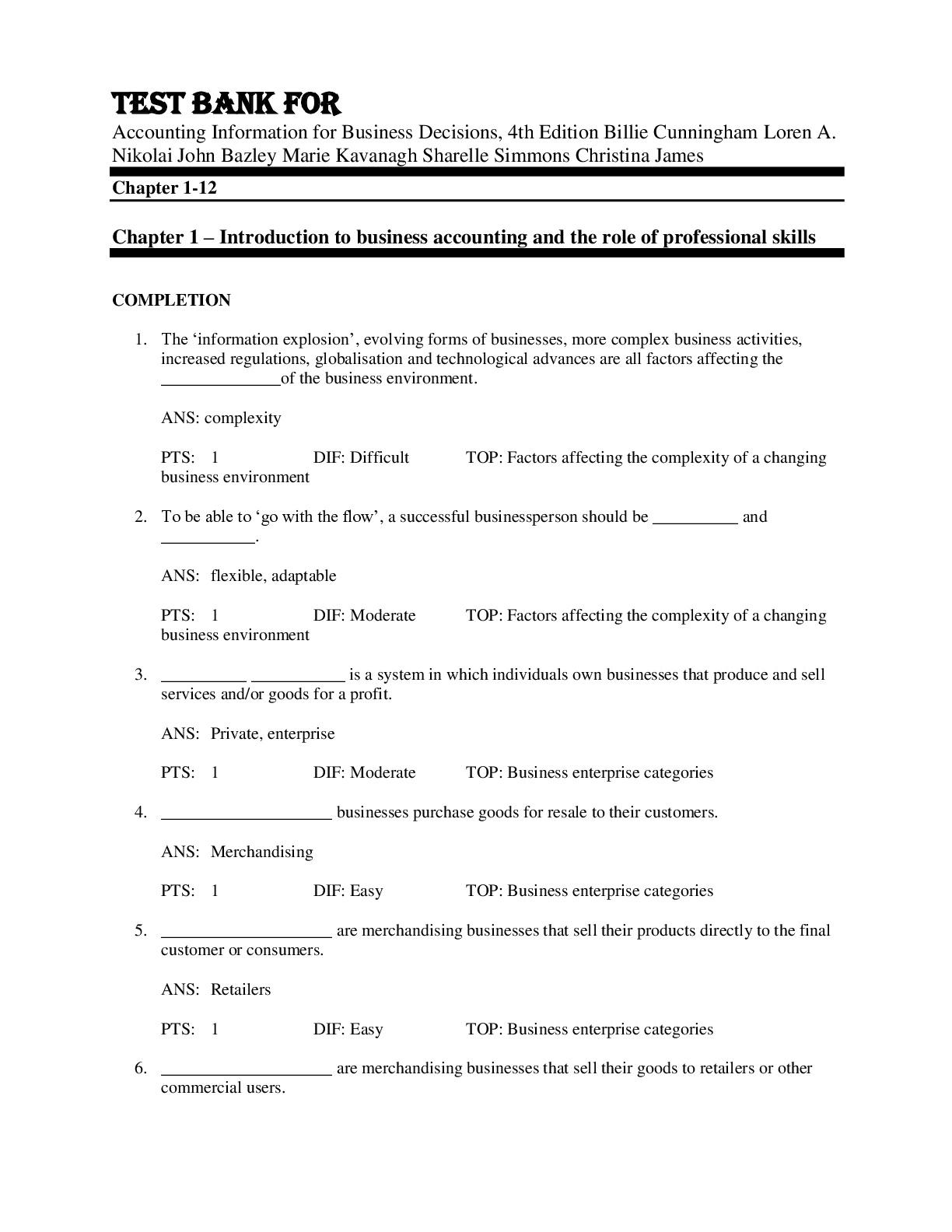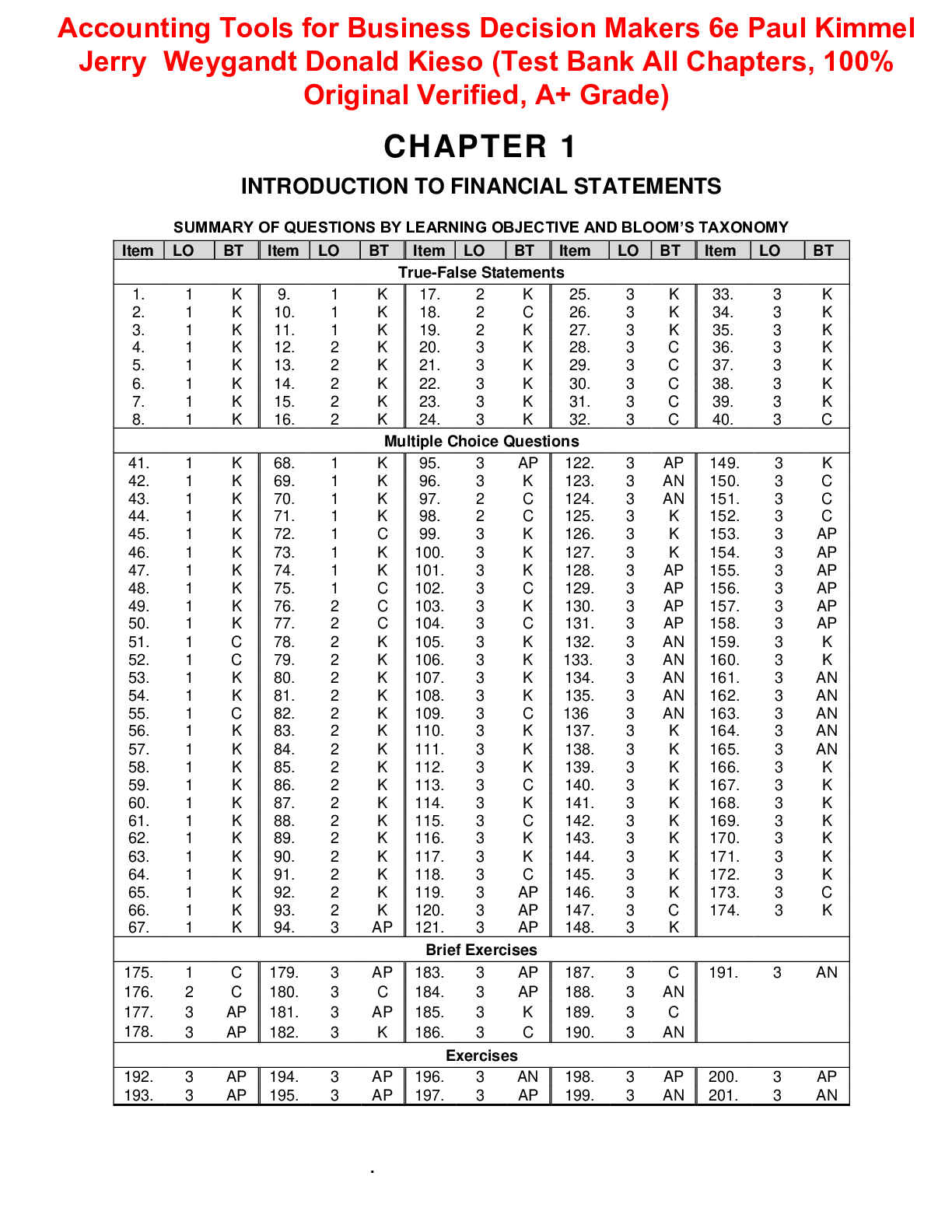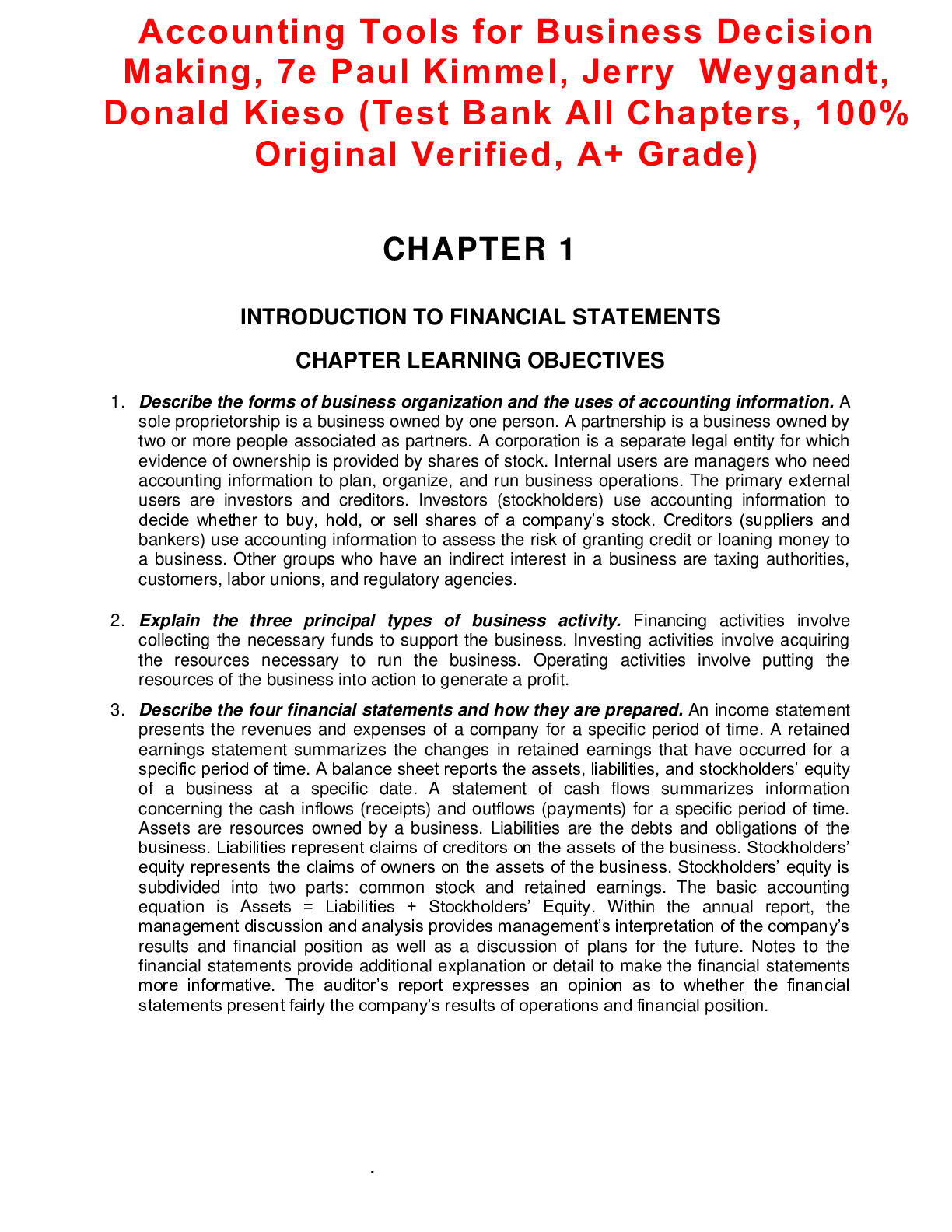Accounting > TEST BANKS > Test Bank For Accounting Tools for Business Decisions Making, 8e Paul Kimmel, Jerry Weygandt, Jill M (All)
Test Bank For Accounting Tools for Business Decisions Making, 8e Paul Kimmel, Jerry Weygandt, Jill Mitchell
Document Content and Description Below
Test Bank For Accounting Tools for Business Decisions Making, 8e Paul Kimmel, Jerry Weygandt, Jill Mitchell -1. Identify the forms of business organization and the uses of accounting information. A s... ole proprietorship is a business owned by one person. A partnership is a business owned by two or more people associated as partners. A corporation is a separate legal entity for which evidence of ownership is provided by shares of stock. Internal users are managers who need accounting information to plan, organize, and run business operations. The primary external users are investors and creditors. Investors (stockholders) use accounting information to decide whether to buy, hold, or sell shares of a company’s stock. Creditors (suppliers and bankers) use accounting information to assess the risk of granting credit or loaning money to a business. Other groups who have an indirect interest in a business are taxing authorities, customers, labor unions, and regulatory agencies. 2. Explain the three principal types of business activity. Financing activities involve collecting the necessary funds to support the business. Investing activities involve acquiring the resources necessary to run the business. Operating activities involve putting the resources of the business into action to generate a profit. 3. Describe the four financial statements and how they are prepared. An income statement presents the revenues and expenses of a company for a specific period of time. A retained earnings statement summarizes the changes in retained earnings that have occurred for a specific period of time. A balance sheet reports the assets, liabilities, and stockholders’ equity of a business at a specific date. A statement of cash flows summarizes information concerning the cash inflows (receipts) and outflows (payments) for a specific period of time. Assets are resources owned by a business. Liabilities are the debts and obligations of the business. Liabilities represent claims of creditors on the assets of the business. Stockholders’ equity represents the claims of owners on the assets of the business. Stockholders’ equity is subdivided into two parts: common stock and retained earnings. The basic accounting equation is Assets = Liabilities + Stockholders’ Equity. Within the annual report, the management discussion and analysis provides management’s interpretation of the company’s results and financial position as well as a discussion of plans for the future. Notes to the financial statements provide additional explanation or detail to make the financial statements more informative. The auditor’s report expresses an opinion as to whether the financial statements present fairly the company’s results of operations and financial position. *4. Explain the career opportunities in accounting. Accounting offers many different jobs in fields such as public and private accounting, governmental, and forensic accounting. Accounting is a popular major because there are many different types of jobs, with unlimited potential for career advancement . 1-2 Test Bank for Kimmel, Financial Accounting: Tools for Business Decision Making, 10e Difficulties: Easy: 143 Medium: 101 Hard: 12 Question List by Section Business Organization and Accounting Information Uses: Forms of Business Organization; 47, 48, 202, 246 Sole Proprietorship: 5, 44, 49, 58, 59 Partnership: 1, 4, 46, 56 Corporation: 2, 3, 45, 50, 51, 52, 53, 55, 57, 233, 245 Hybrid Forms of Organization: 60, 61 Users and Uses of Financial Information: 6, 7, 11, 74, 87 Internal Users: 62, 63, 64, 75, 77, 82, 234 External Users: 8, 9, 10, 12, 65, 76, 78, 79, 80, 81, 83, 84, 85, 86, 88, 89 Data Analytics: 66, 67, 68, 69, 70, 235, 236 Ethics in Financial Reporting: 71, 72, 73, 237, 255 The Three Types of Business Activity: 97 Financing Activities: 13, 15, 18, 90, 91, 93, 94, 95, 96, 97, 102, 109, 117, 118, 119, 238 Investing Activities: 14, 16, 98, 99, 115, 116 Operating Activities: 17, 19, 20, 100, 101, 103, 104, 105, 106, 107, 108, 110, 111, 112, 113, 114 The Four Financial Statements: Income Statement: 21, 22, 23, 24,127, 128, 132, 133, 134, 138, 142, 143 Retained Earnings Statement: 120, 122, 123, 124, 125, 126, 129, 130, 131, 135, 137, 139, 140, 141, 144, 145, 146, 147, 148, 149, 150, 154, 164, 169, 178, 181, 252 Balance Sheet: 25, 27, 28, 29, 30, 31, 32, 33, 34, 35, 136, 151, 152, 153, 163, 165, 166, 168, 170, 173, 177, 179, 180, 182, 185, 186, 187, 188, 199, 200, 201, 207, 208, 213, 214, 215, 216, 217, 218, 219, 220, 221, 222, 225, 229, 239, 240, 241, 253 Statement of Cash Flows: 26, 121, 171, 174, 183, 242, 249 Interrelationships of Statements: 155, 156, 157, 158, 159, 160, 161, 162, 167, 175, 176, 184, 250, 251, 256 Elements of an Annual Report: 36, 41, 192, 196, 197 Management Discussion and Analysis: 40, 191 Notes to the Financial Statements: 37, 42, 190, 193, 194, 198, 254 Auditor’s Report: 38, 39, 195 . Introduction to Financial Statements 1-3 TRUE-FALSE STATEMENTS 1. A business organized as a separate legal entity and owned by stockholders is a partnership. Ans: F, LO: 1, Section: Business Organization and Accounting Information Uses, Subsection: Partnership, Bloom: K, Difficulty: Easy, Min: 1, AACSB: None, AICPA BC: Process and Resource Management Perspectives, AICPA AC: Reporting, AICPA PC: None, IMA: Reporting 2. Corporate stockholders have no personal liability for the debts of the corporation. Ans: T, LO: 1, Section: Business Organization and Accounting Information Uses, Subsection: Corporation, Bloom: K, Difficulty: Easy, Min: 1, AACSB: None, AICPA BC: Process and Resource Management Perspectives, AICPA AC: Reporting, AICPA PC: None, IMA: Reporting 3. The liability of corporate stockholders is limited to the amount of their investment. Ans: T, LO: 1, Section: Business Organization and Accounting Information Uses, Subsection: Corporation, Bloom: K, Difficulty: Easy, Min: 1, AACSB: None, AICPA BC: Process and Resource Management Perspectives, AICPA AC: Reporting, AICPA PC: None, IMA: Reporting 4. The majority of U.S. business is transacted by partnerships. Ans: F, LO: 1, Bloom: K, Section: Business Organization and Accounting Information Uses, Subsection: Partnerships, Difficulty: Easy, Min: 1, AACSB: None, AICPA BC: Process and Resource Management Perspectives, AICPA AC: Reporting, AICPA PC: None, IMA: Reporting 5. Sole proprietorships in the United States generate more revenue than the other two forms of business enterprise. Ans: F, LO: 1, Section: Business Organization and Accounting Information Uses, Subsection: Sole Proprietorship, Bloom: K, Difficulty: Easy, Min: 1, AACSB: None, AICPA BC: Process and Resource Management Perspectives, AICPA AC: Reporting, AICPA PC: None, IMA: Reporting 6. Owners of business firms are the only people who need accounting information. Ans: F, LO: 1, Section: Business Organization and Accounting Information Uses, Subsection: Users and Uses of Financial Information, Bloom: K, Difficulty: Easy, Min: 1, AACSB: None, AICPA BC: Process and Resource Management Perspectives, AICPA AC: Reporting, AICPA PC: None, IMA: Reporting 7. Some users of accounting information are internal to the company while others are external. Ans: T, LO: 1, Section: Business Organization and Accounting Information Uses, Subsection: Users and Uses of Financial Information, Bloom: K, Difficulty: Easy, Min: 1, AACSB: None, AICPA BC: Process and Resource Management Perspectives, AICPA AC: Reporting, AICPA PC: None, IMA: Reporting 8. Management of a business enterprise is the major external user of accounting information. Ans: F, LO: 1, Section: Business Organization and Accounting Information Uses, Subsection: External Users, Bloom: K, Difficulty: Easy, Min: 1, AACSB: None, AICPA BC: Process and Resource Management Perspectives, AICPA AC: Reporting, AICPA PC: None, IMA: Reporting 9. External users of accounting information include managers who plan, organize, and run a business. Ans: F, LO: 1, Section: Business Organization and Accounting Information Uses, Subsection: External Users, Bloom: K, Difficulty: Easy, Min: 1, AACSB: None, AICPA BC: Process and Resource Management Perspectives, AICPA AC: Reporting, AICPA PC: None, IMA: Reporting 10. The accounting information needs and questions of external users vary considerably. Ans: T, LO: 1, Section: Business Organization and Accounting Information Uses, Subsection: External Users, Bloom: K, Difficulty: Easy, Min: 1, AACSB: None, AICPA BC: Process and Resource Management Perspectives, AICPA AC: Reporting, AICPA PC: None, IMA: Reporting [Show More]
Last updated: 9 months ago
Preview 5 out of 2227 pages

Loading document previews ...
Buy this document to get the full access instantly
Instant Download Access after purchase
Buy NowInstant download
We Accept:

Reviews( 0 )
$19.50
Can't find what you want? Try our AI powered Search
Document information
Connected school, study & course
About the document
Uploaded On
Oct 17, 2024
Number of pages
2227
Written in
Additional information
This document has been written for:
Uploaded
Oct 17, 2024
Downloads
0
Views
18

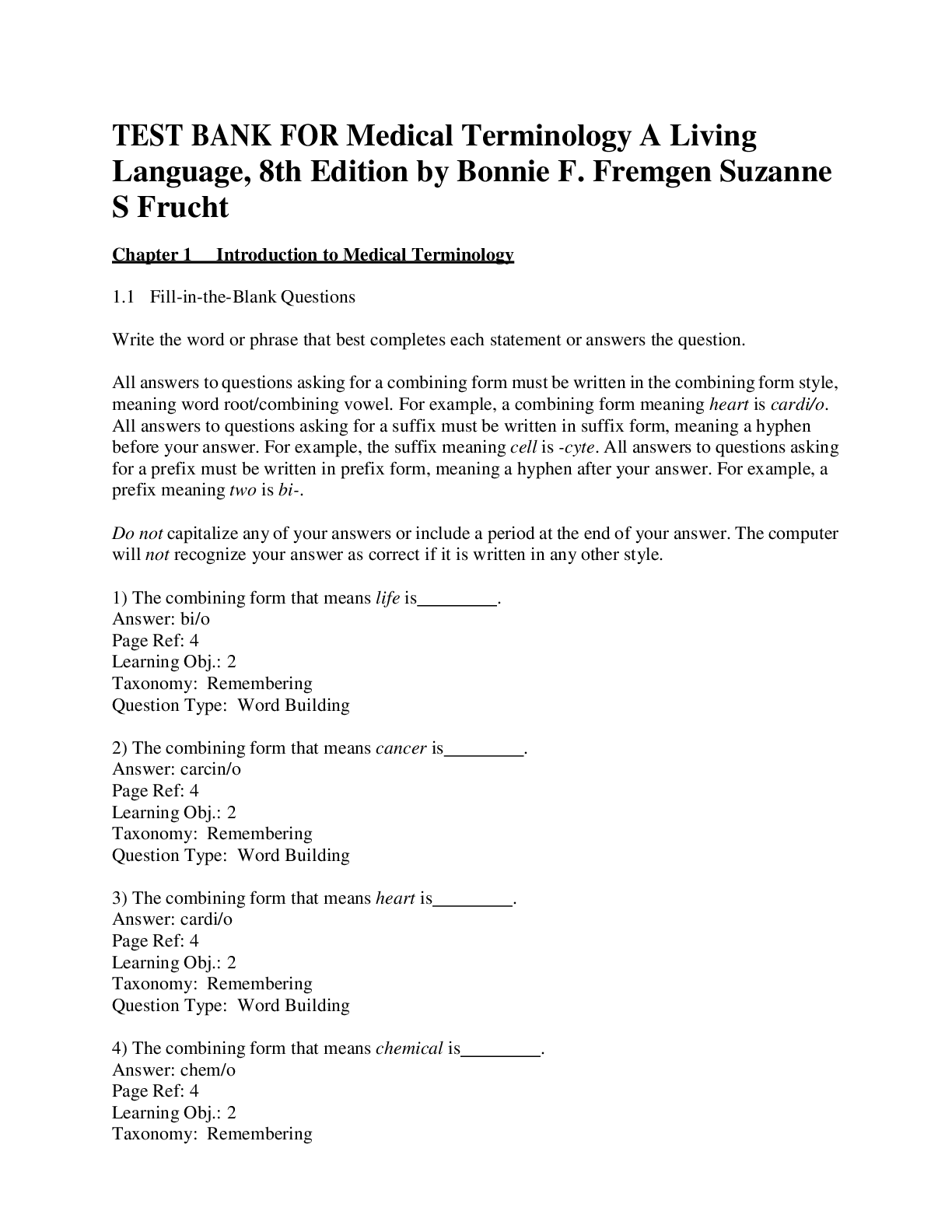
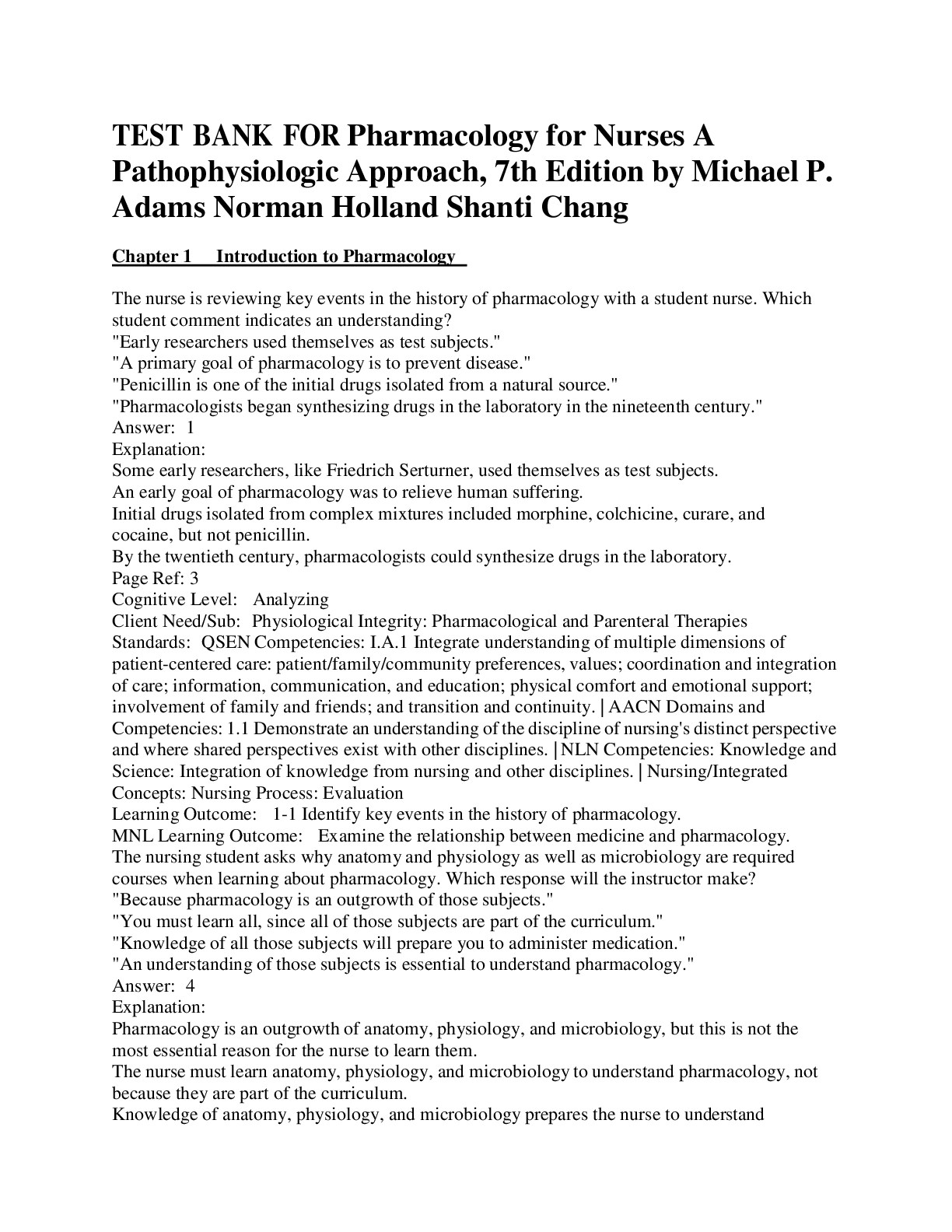

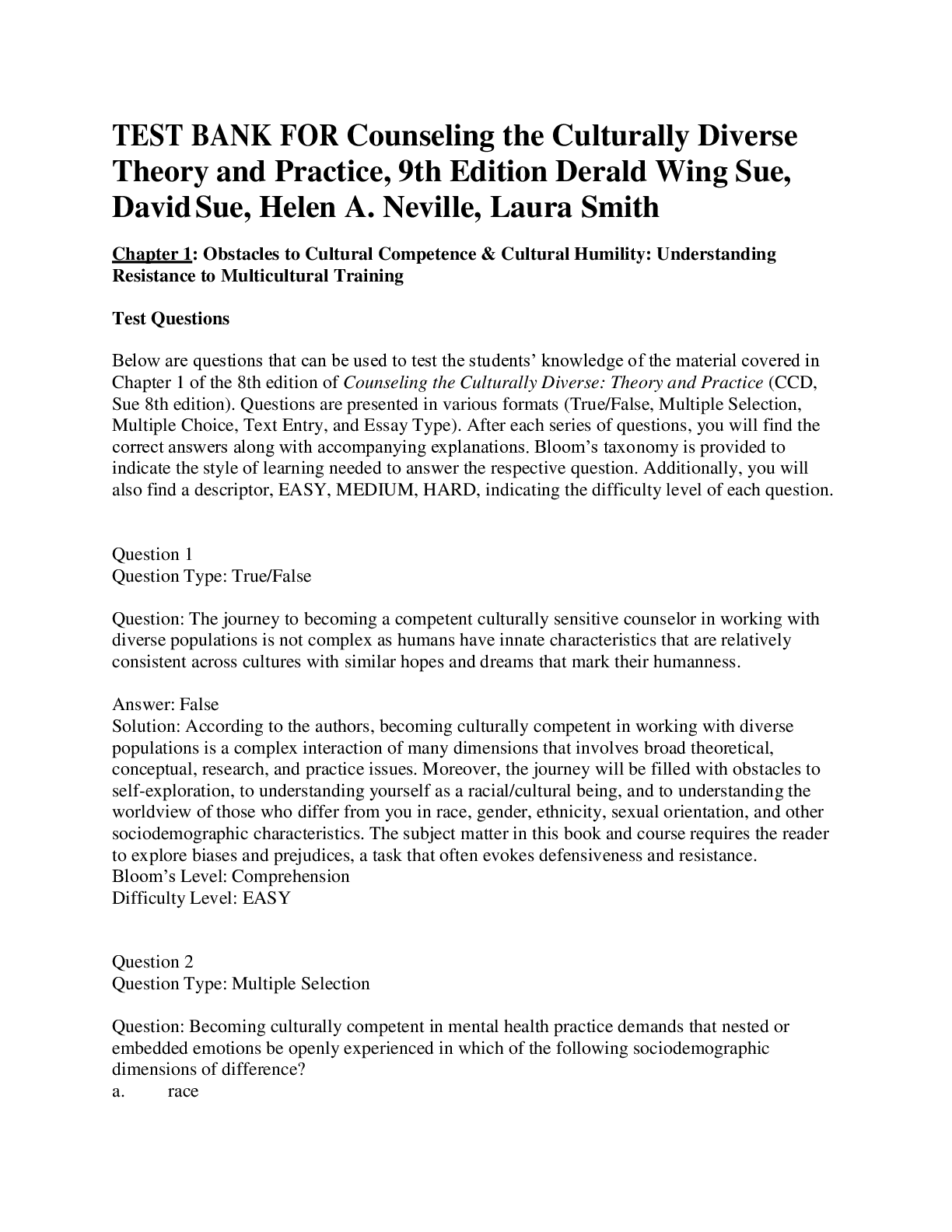
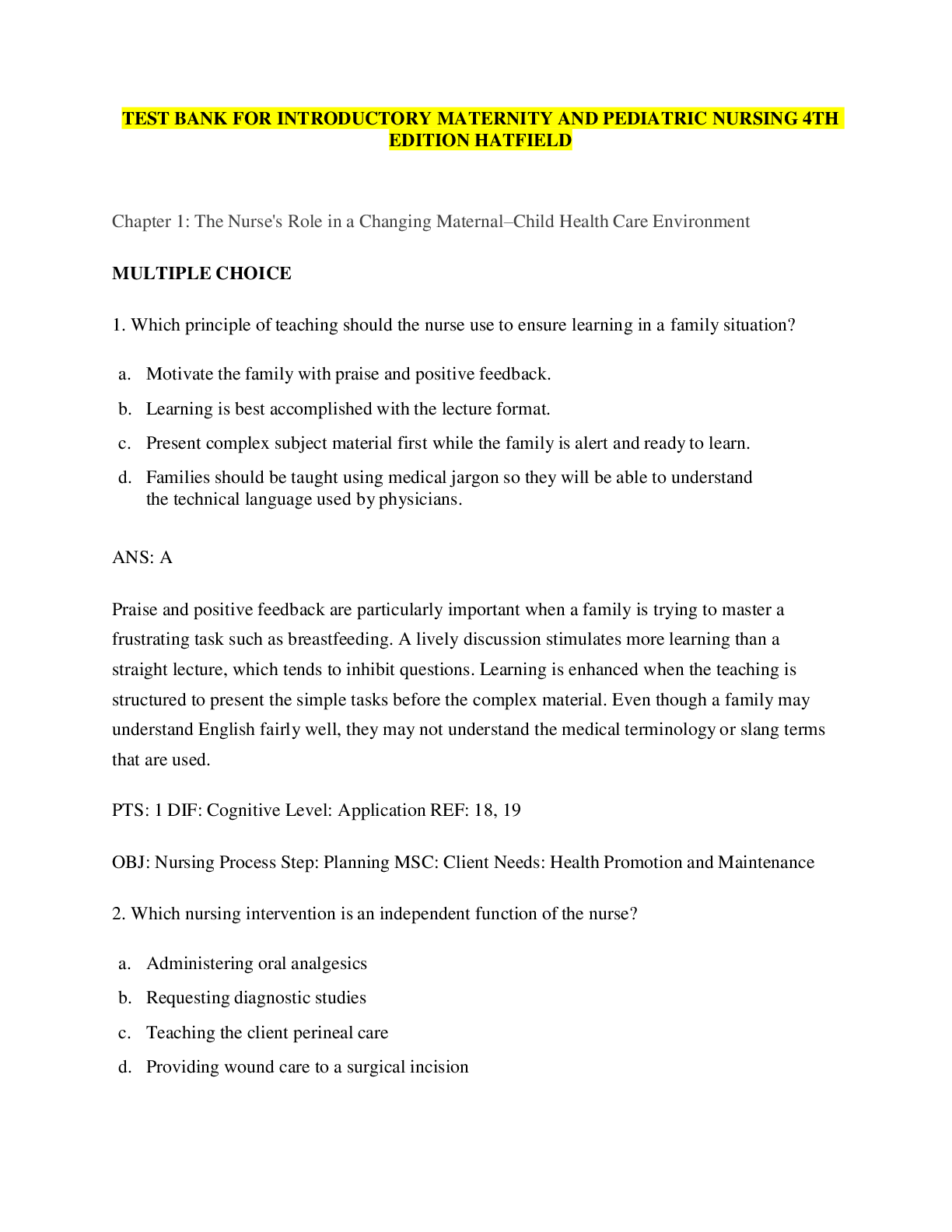


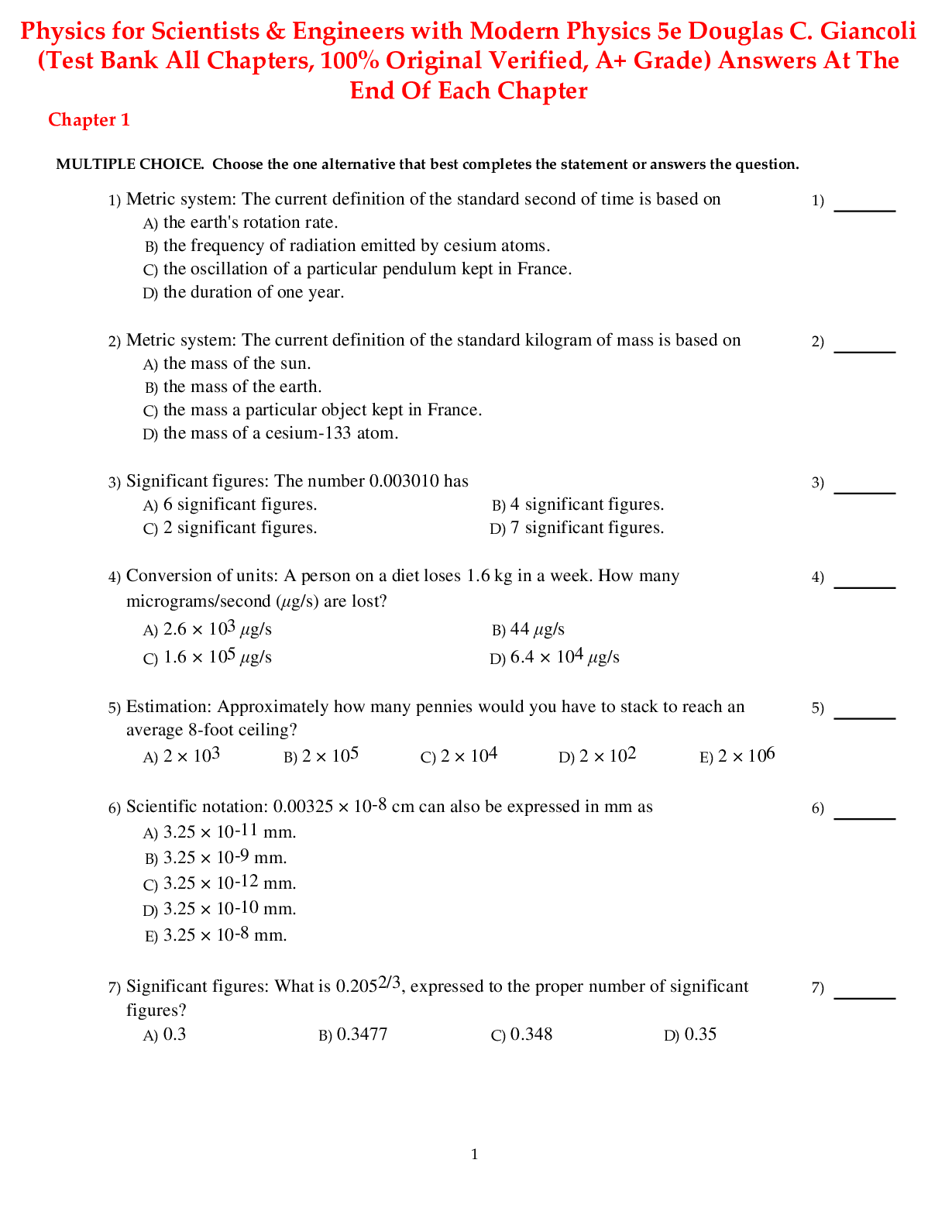
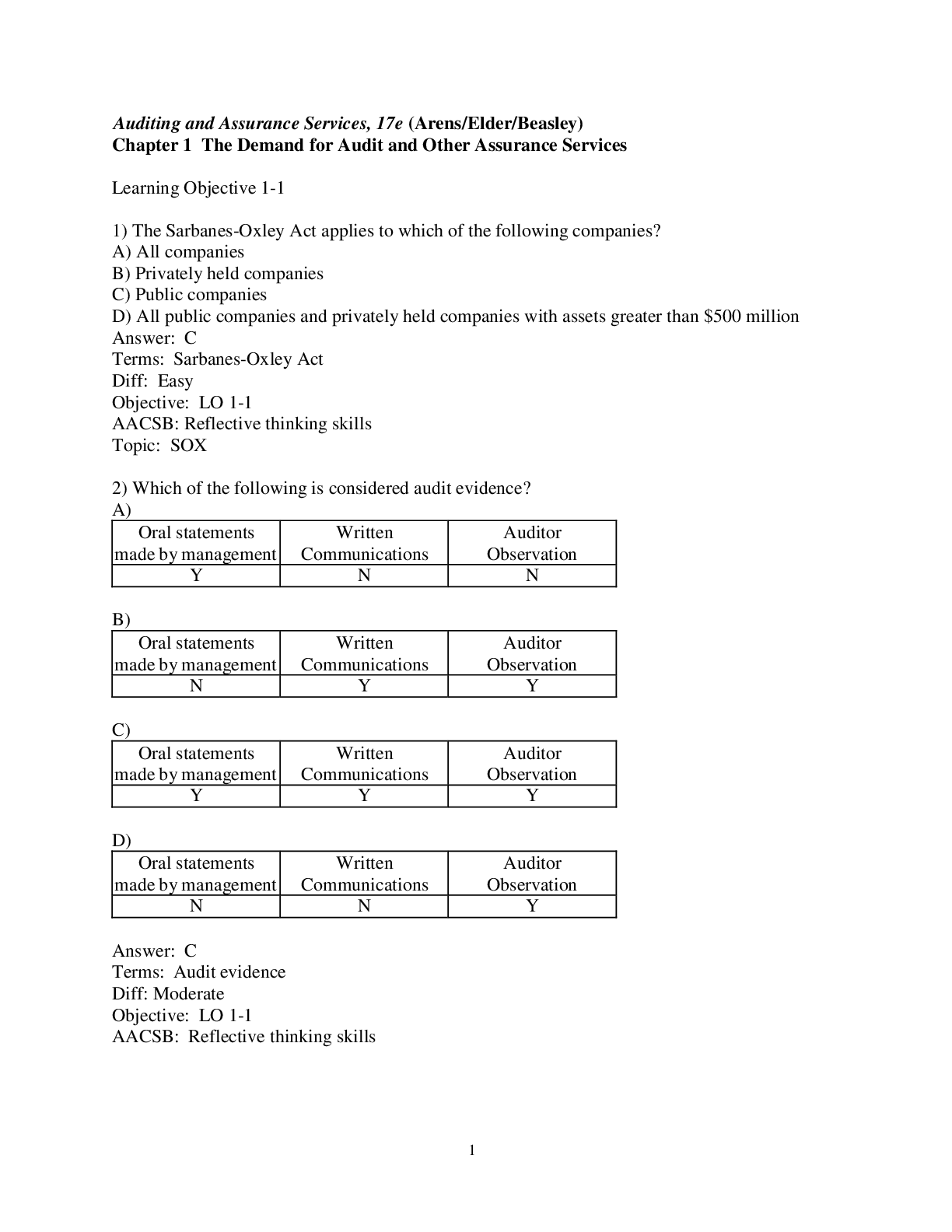
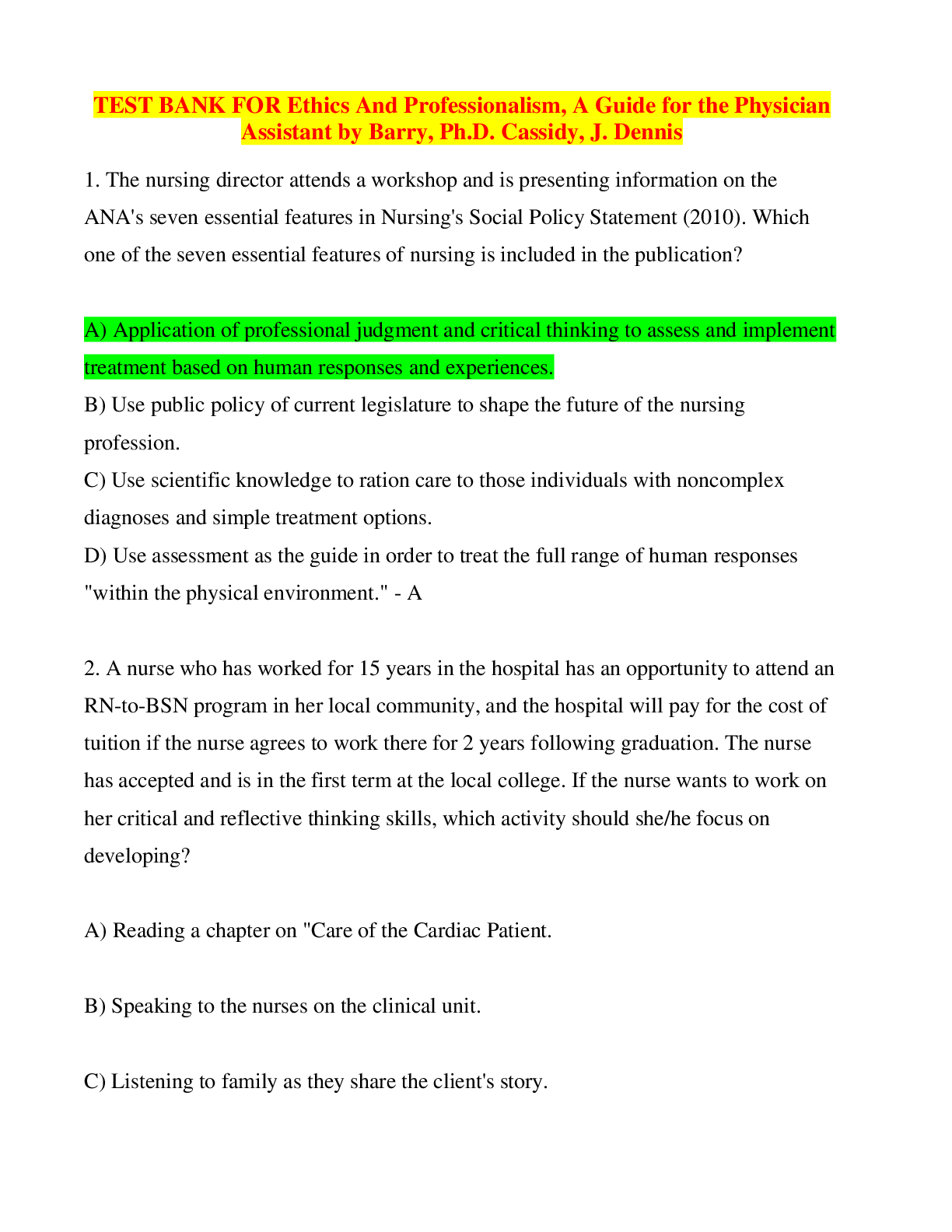




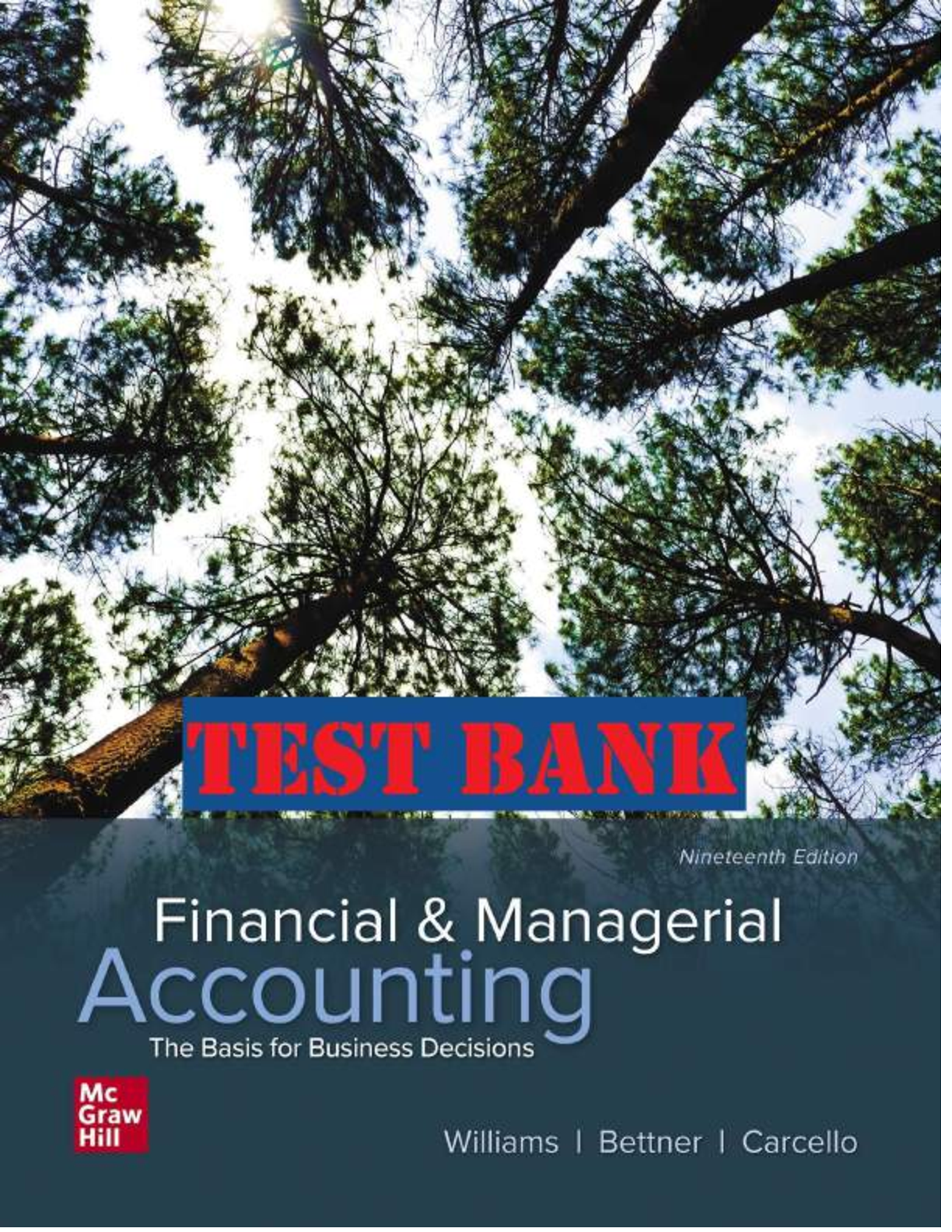
.png)
.png)
